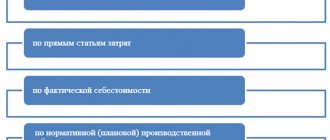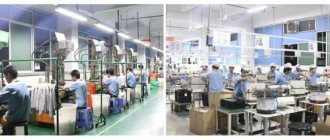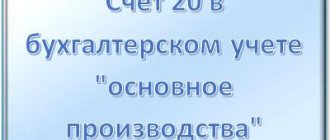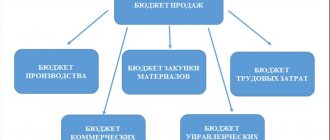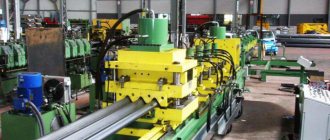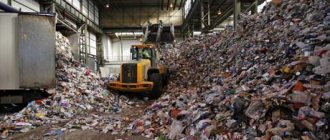So let's start with the legal regulation of materials accounting.
That is, laws on materials accounting. The very first regulatory legal act is the order of the Ministry of Finance dated 06/09/2001 N 44n:
1) “Accounting for inventories” PBU (Accounting Regulations) 5/01
Second NLA in importance:
2) Order “ON APPROVAL OF METHODOLOGICAL INSTRUCTIONS FOR ACCOUNTING OF INVENTORIES” N 119n was also approved by the Ministry of Finance.
PBU 5 01 has higher legality, that is, if there are differences between these two laws, then PBU is more important.
Materials (inventory) include such assets as:
used as raw materials, materials, etc. in the production of products intended for sale (performance of work, provision of services);
intended for sale;
used for the management needs of the organization.
Finished products are also included in the materials group.
Finished products are accounted for on account 43 “Finished products”
Products are also included in the materials group. Goods are materials purchased for resale. Goods are accounted for in 41 accounts. More on products later
Inventories are accepted for accounting at actual cost. (i.e., accounted for at actual cost)
The actual cost of inventories includes all delivery costs and the cost of goods. VAT is not included in the price (if VAT is reimbursed from the budget)
The actual costs of purchasing inventories include:
amounts paid in accordance with the agreement to the supplier (seller);
amounts paid to organizations for information and consulting services related to the acquisition of inventories;
customs duties;
non-refundable taxes paid in connection with the acquisition of a unit of inventory;
remunerations paid to the intermediary organization through which inventories were acquired;
costs for the procurement and delivery of inventories to the place of their use, including insurance costs.
Non-finished method of accounting
Under the unfinished method, the product produced as a result of a separate stage of the production process is not accounted for as a semi-finished product in a separate account. Its transfer for further processing is reflected only in physical terms (i.e. in kg, pcs., etc.). In this case, do not calculate the cost of the finished product. With this option, consider the costs as part of work in progress along with other costs (i.e., on account 20).
Direct costs that are directly related to production are reflected in the debit of account 20 in correspondence with the expense accounts. In this case, do the wiring:
Debit 20 Credit 10 (02, 05, 23, 29, 69, 70...) – direct costs for the production of semi-finished products are taken into account.
First, record general production costs on account 25, and then at the end of the month write them off to account 20. At the same time, make the following entries:
Debit 25 Credit 10 (02, 05, 23, 69, 70...) – general production expenses are reflected;
Debit 20 Credit 25 – general production costs are taken into account as part of the expenses for the production of semi-finished products.
Consider general business expenses as part of production costs (i.e., on account 20) if they are not immediately included in the cost of products sold (i.e., are not written off to account 90 “Sales”). For more information about this, see How to write off general production and general business expenses. In this case, make the following entries:
Debit 26 Credit 10 (02, 05, 69, 70...) – general business expenses are reflected;
Debit 20 Credit 26 – general business expenses are taken into account as part of the expenses for the production of semi-finished products.
This order follows from the Instructions for the chart of accounts (accounts 20, 25, 26).
All costs collected on account 20, as finished products are released, are written off from the credit of the account to the debit of the corresponding accounts (accounts 40 and 43). For more information about this, see How to reflect the release of finished products in accounting. The balance on account 20 will show the value of work in progress. For more information on accounting for work in progress, see How to Determine the Value of Work in Process.
The advantages of the semi-finished method are that it is less labor-intensive. However, using it, the organization will not be able to control the costs of producing semi-finished products. This means constant control over the cost of finished products. In addition, if an organization decides to sell semi-finished products of its own production, difficulties will arise in determining their cost.
Who can apply the article?
It is not advisable for manufacturing enterprises carrying out a single output of products to separately open an account to reflect the receipt and movement of semi-finished products created by them independently. Such companies may reflect information on their accounts. 20, opening a separate article in it. The use of account 21 is considered appropriate if there is a mass production of products involving a large number of items. In this case, it becomes possible to monitor and regulate costs, if necessary, and accurately determine the price of semi-finished products when selling them to third-party companies. As a rule, account 21 is used by enterprises engaged in textile, food, chemical and metallurgical production. The technological process they use includes several processing stages. It is carried out in different workshops. At the same time, at the output, each department receives products with certain characteristics. This is considered primary processing.
As objects are further moved, they acquire qualities that make them suitable for consumption by the end user. At each stage of the process, the product is endowed with characteristics that bring it closer to the finished product.
Semi-finished accounting method
The semi-finished method assumes that the produced semi-finished products are taken into account in quantitative and total terms, and their cost is calculated. In this case, accounting for semi-finished products is kept separately in a separate account. Despite the fact that this method is more labor-intensive, it has its advantages. Using it, it is possible to control the costs of production of finished products at each stage of production. In addition, if an organization decides to sell a semi-finished product, knowing its cost, it will be able to realistically assess the financial result of this operation.
In accounting, reflect the costs of producing semi-finished products on account 20 “Main production”, to which open a separate sub-account “Production of semi-finished products”.
Direct costs that are directly related to the production of semi-finished products are reflected in the debit of this account in correspondence with the expense accounts. In this case, do the wiring:
Debit 20 subaccount “Production of semi-finished products” Credit 10 (02, 05, 69, 70...) – direct costs for the production of semi-finished products are taken into account.
First, record general production costs on account 25, and then at the end of the month write them off to account 20. At the same time, make the following entries:
Debit 25 Credit 10 (02, 05, 69, 70...) – general production expenses are reflected;
Debit 20 subaccount “Production of semi-finished products” Credit 25 – general production costs are taken into account as part of the costs for the production of semi-finished products.
General business expenses should be taken into account as part of the costs of producing semi-finished products (i.e., on account 20) if they are not immediately included in the cost of products sold (i.e., not written off on account 90 “Sales”). For more information about this, see How to write off general production and general business expenses. In this case, make the following entries:
Debit 26 Credit 10 (02, 05, 69, 70...) – general business expenses are reflected;
Debit 20 subaccount “Production of semi-finished products” Credit 26 – general business expenses are taken into account as part of the expenses for the production of semi-finished products.
This order follows from the Instructions for the chart of accounts (accounts 20, 25, 26).
Receipt from production
Receipts from the production of finished semi-finished products are accounted for in a separate account 21 “Semi-finished products of own production”. To capitalize semi-finished products, determine their cost. To calculate it, use the methods that are used to evaluate work in progress:
- at the cost of raw materials and materials used in the manufacture of semi-finished products;
- by the amount of direct costs;
- at actual or standard cost.
The use of these methods is explained by the fact that semi-finished products are part of work in progress.
This procedure follows from paragraph 64 of the Regulations on Accounting and Reporting.
Document the receipt of finished semi-finished products from production by posting:
Debit 21 Credit 20 subaccount “Production of semi-finished products” - semi-finished products of own production are capitalized.
Do it on the basis of the invoice requirement in form No. M-11, which is drawn up when semi-finished products are received into the warehouse.
This procedure follows from the Instructions for the chart of accounts (accounts 21, 20) and paragraph 57 of the Methodological Instructions, approved by Order of the Ministry of Finance of Russia dated December 28, 2001 No. 119n.
EXAMPLE No. 1
Lyutik LLC manufactures several types of units and keeps cost records using the semi-finished method. The production cycle (from the moment of turning parts to obtaining the final product - the unit) consists of three stages.
According to the accounting policy, for accounting purposes, semi-finished products are valued at standard production costs with subsequent identification of deviations between actual and standard costs.
Let us assume that the standard production cost (according to economic calculations) is:
| Name | Standard production cost, rub. | |
| Redistribution No. 1 | Redistribution No. 2 | |
| Semi-finished products | 100 000 | 120 000 |
| Finished products: | ||
| - unit A | 100 000 | |
| — unit B | 190 000 | |
Write-off methods
Determine the cost at which semi-finished products are written off from account 21 in one of the following ways:
- at the cost of each unit of inventory;
- FIFO;
- at average cost.
The method for estimating the cost of write-off semi-finished products should be established in the accounting policy for accounting purposes.
Document the release of semi-finished products into production using the same primary documents as all other materials.
Such rules are established by paragraphs 73, 82 of the Methodological Instructions, approved by Order of the Ministry of Finance of Russia dated December 28, 2001 No. 119n, paragraph 16 of PBU 5/01 and the Instructions for the Chart of Accounts.
Sales of semi-finished products
Semi-finished products of own production intended for sale are finished products. Therefore, arrange their implementation in a similar order. For more information, see:
- What documents should be used to document the shipment of finished products (performance of work, provision of services);
- How to record sales of finished products in accounting.
When selling semi-finished products, make the following entries:
Debit 62 Credit 90-1 – revenue from the sale of semi-finished products of own production is reflected;
Debit 90-2 Credit 21 – the cost of semi-finished products sold is written off;
Debit 90-3 Credit 68 subaccount “Calculations for VAT” - VAT is charged on the sale of semi-finished products (if such sales are subject to VAT).
The procedure for accounting for expenses for the production of semi-finished products when calculating taxes depends on the taxation system that the organization uses.
BASIC
When calculating income tax, costs for the production of semi-finished products used in the manufacture of products should be taken into account as part of expenses in the general manner.
If an organization uses the cash method, then sales revenue will be reduced by all expenses for which the conditions for their recognition in the tax base are met (clause 3 of Article 273 of the Tax Code of the Russian Federation). For example, expenses for the purchase of raw materials and materials used in the production of semi-finished products can be written off as expenses only if three conditions are simultaneously met: payment, release into production and use in it at the end of the month (subclause 1, clause 3, article 273, clause 5, Article 254 of the Tax Code of the Russian Federation).
If an organization sells semi-finished products, recognize the proceeds from the sale as income from sales (Article 249 of the Tax Code of the Russian Federation). Revenue is recognized upon receipt of payment for shipped semi-finished products (Clause 2 of Article 273 of the Tax Code of the Russian Federation). The advance payment (advance payment) received from the buyer should also be taken into account as part of income at the time of receipt (clause 2 of Article 273, subclause 1 of clause 1 of Article 251 of the Tax Code of the Russian Federation). This rule applies despite the fact that at the time of receiving the advance, the semi-finished products have not yet actually been transferred to the buyer (clause 8 of the information letter of the Presidium of the Supreme Arbitration Court of the Russian Federation dated December 22, 2005 No. 98).
If an organization uses the accrual method, write off indirect costs for the production of semi-finished products in full in the period to which they relate (according to the rules of Article 272 of the Tax Code of the Russian Federation). And direct costs need to be distributed. That part of them that relates to the balances of work in progress, finished products in the warehouse or shipped (but not sold) products will not increase the organization’s current expenses. This is provided for in paragraph 2 of Article 318 of the Tax Code of the Russian Federation.
The cost of semi-finished products that have not been transferred for further processing at the end of the month is taken into account as part of work in progress for direct expenses (clause 4 of Article 254 and Article 319 of the Tax Code of the Russian Federation). Also calculate the cost of semi-finished products if the organization plans to sell them. In this case, determine their cost based on the direct costs of producing semi-finished products (clause 4 of article 254, article 319 of the Tax Code of the Russian Federation, letter of the Department of Tax Administration of Russia for Moscow dated October 23, 2003 No. 26-12/59541). When calculating income tax, take into account the cost of semi-finished products at the time of their sale (i.e., at the moment of transfer of ownership of them to the buyer) (clause 1 of Article 272 and subclause 2 of clause 1 of Article 268 of the Tax Code of the Russian Federation).
As a general rule, revenue from the sale of semi-finished products is subject to VAT (subclause 1, clause 1, article 146 of the Tax Code of the Russian Federation). For more information about this, see How to calculate VAT on the sale of goods (work, services).
An example of reflection in accounting and taxation of costs for the production of semi-finished products
LLC "Proizvodstvennaya" is engaged in the production of snack products - crackers. The process of making crackers consists of two stages. At the first stage, in workshop No. 1, unspecified crackers are produced, which are accounted for as semi-finished products. Then they are transferred to workshop No. 2 for final production.
In June, production costs in workshop No. 1 amounted to:
- the cost of materials transferred to production is 400,000 rubles;
- cost of materials used – 370,000 rubles;
- the amount of accrued salary is 240,000 rubles;
- the amount of accrued contributions for compulsory pension (social, medical) insurance and contributions for insurance against accidents and occupational diseases - 62,880 rubles;
- other expenses (general production and general economic) – 550,000 rubles.
In Master's accounting, semi-finished products are valued based on the amount of direct costs. Therefore, to determine their cost, the accountant allocated direct costs between semi-finished products produced and work in progress balances. The organization's accounting policy establishes that direct costs are distributed in proportion to the cost of materials attributable to finished products and work in progress.
The cost of unspecified crackers produced in workshop No. 1 was calculated by the accountant as follows:
– first determined the amount of direct costs (except for materials) – 302,880 rubles. (RUB 240,000 + RUB 62,880);
- then determined the share of these direct costs attributable to the produced semi-finished products - 280,164 rubles. (RUB 302,880 : RUB 400,000 × RUB 370,000).
The total amount of direct costs attributable to manufactured semi-finished products amounted to 650,164 rubles. (RUB 280,164 + RUB 370,000).
The accountant reflected the receipt of finished semi-finished products from workshop No. 1 as follows:
Debit 21 Credit 20 subaccount “Production of semi-finished products” – 650,164 rubles. – semi-finished products of our own production were capitalized.
In accordance with the accounting policy, the transfer of semi-finished products to production is carried out at average cost. In June, unspecified crackers in the amount of 487,623 rubles were transferred to workshop No. 2. At the same time, the accountant made the following entry:
Debit 20 Credit 21 – 487,623 rub. – semi-finished products were transferred for the production of finished products.
In tax accounting, the accountant did not take into account the transfer of semi-finished products, since the costs of their production will be taken into account only when selling finished products in the production of which these semi-finished products were used.
If an organization sells semi-finished products of its own production at retail and in the municipality in which the organization is registered, retail trade is transferred to the payment of UTII, this operation does not fall under this special tax regime (subclauses 6 and 7 of clause 2 of Article 346.26 of the Tax Code of the Russian Federation). This is explained by the fact that the obligation to pay UTII when selling goods at retail depends, among other things, on the type of property being sold. The sale of products of own production does not fall under UTII (paragraph 12 of article 346.27 of the Tax Code of the Russian Federation).
An exception to this rule is the sale of semi-finished products of own production through public catering facilities (cafes, restaurants, canteens, snack bars, bars). This type of service, if other conditions are met, falls under UTII (Article 346.27 of the Tax Code of the Russian Federation, letters of the Ministry of Finance of Russia dated August 15, 2006 No. 03-11-04/3/376, dated August 23, 2006 No. 03-11-02- 185, dated November 1, 2006 No. 03-11-04/3/482). In this case, the sale of semi-finished products is not subject to income tax and VAT (clause 4 of Article 346.26 of the Tax Code of the Russian Federation). When calculating the single tax, take into account imputed income as an object of taxation (clause 1 of Article 346.29 of the Tax Code of the Russian Federation). In addition, organize separate accounting of property, liabilities and business transactions in relation to the activities of the organization, subject to UTII, and the activities of the organization on the general taxation system for the purpose of calculating income tax and VAT (clause 9 of Article 274, clause 7 of Article 346.26 of the Tax Code RF).
Features of objects
The concept of semi-finished products manufactured by an enterprise independently is, in its economic essence, similar to the category of work in progress. Like WIP, they do not go through all stages of the technological process. Accordingly, semi-finished products cannot be called the final product. However, their essential feature is that at the previous stage they were brought to a certain state of readiness. Therefore, semi-finished products can subsequently:
- Sold to third party companies.
- Sent to the next workshop to create the finished product.
- Transferred to a structural unit (for example, to auxiliary production).
simplified tax system
The procedure for accounting for income and expenses associated with the production and sale of semi-finished products depends on the object of taxation chosen by the simplified organization.
If an organization pays a single tax on income, expenses for the production of semi-finished products do not reduce the tax base (clause 1 of Article 346.18 of the Tax Code of the Russian Federation).
If an organization sells these semi-finished products, income from their sale will be taken into account when calculating the single tax (Clause 1, Article 346.15, Article 249 of the Tax Code of the Russian Federation). Recognize it in the period in which semi-finished products will be paid for. The date of receipt of income is the day the debt to the organization is repaid (the day money is received in a bank account or cash register, receipt of property, etc.). If a bill of exchange is received as payment, recognize income at the time it is paid or transferred by endorsement to a third party. This is stated in paragraph 1 of Article 346.17 of the Tax Code of the Russian Federation.
If an organization pays a single tax on the difference between income and expenses, take into account the costs of producing semi-finished products in the general manner, regardless of which cost accounting method the organization uses (semi-finished or unfinished) (Articles 346.16, 346.17 of the Tax Code of the Russian Federation).
If in the municipality in which the organization is registered, retail trade has been transferred to the payment of UTII, when selling semi-finished products of its own production at retail, this tax does not need to be paid (subclauses 6 and 7 of paragraph 2 of Article 346.26 of the Tax Code of the Russian Federation). This is explained by the fact that the obligation to pay UTII when selling goods at retail depends, among other things, on the type of property being sold. The sale of products of own production does not fall under UTII (paragraph 12 of article 346.27 of the Tax Code of the Russian Federation). An exception to this rule is the sale of semi-finished products of own production through public catering facilities (cafes, restaurants, canteens, snack bars, bars). This type of service, if other conditions are met, falls under UTII (Article 346.27 of the Tax Code of the Russian Federation, letters of the Ministry of Finance of Russia dated August 15, 2006 No. 03-11-04/3/376, dated August 23, 2006 No. 03-11-02- 185, dated November 1, 2006 No. 03-11-04/3/482). In this case, the sale of semi-finished products is not subject to a single tax under simplification (clause 4 of Article 346.12 of the Tax Code of the Russian Federation). When calculating UTII, take into account imputed income as an object of taxation (clause 1 of Article 346.29 of the Tax Code of the Russian Federation). In addition, organize separate accounting of property, liabilities and business transactions in relation to the activities of an organization subject to UTII and the activities of an organization subject to a simplified tax regime (clause 7 of Article 346.26 of the Tax Code of the Russian Federation).
Typical accounting entries
Basic transactions for 21 accounts look like this:
1) Dt 21
Kt 20 – accounting of received semi-finished products produced independently;
2) Dt 21
Kt 23 - accounting for the designated category of products produced in auxiliary workshops;
3) Dt 21
Kt 40 – reflection of received products for their subsequent use as a semi-finished product;
4) Dt 21
Kt 91.01 - capitalization of surplus semi-finished products that were identified during the inventory process;
5) Dt 20
Kt 21 – products transferred to production;
6) Dt 28
Kt 21 – write-off of defective products of own production;
7) Dt 94
Kt 21 - a reflection of the identified shortage of products, etc.
UTII
The object of UTII taxation is imputed income for a specific type of activity of the organization (clauses 1 and 2 of Article 346.29 of the Tax Code of the Russian Federation). Therefore, expenses associated with the production of semi-finished products do not affect the determination of the tax base for UTII.
If an organization sells semi-finished products of its own production at retail, this operation does not fall under this special tax regime (subclauses 6 and 7, clause 2, article 346.26 of the Tax Code of the Russian Federation). This is explained by the fact that the obligation to pay UTII when selling goods at retail depends, among other things, on the type of property being sold. The sale of products of own production is not subject to UTII (paragraph 12, article 346.27 of the Tax Code of the Russian Federation). This means that in this case, the organization must pay taxes in accordance with the general taxation system or a simplified tax system (clause 7 of Article 346.26 of the Tax Code of the Russian Federation). An exception to this rule is the sale of semi-finished products of own production through public catering facilities (cafes, restaurants, canteens, snack bars, bars). This type of service, if other conditions are met, falls under UTII (Article 346.27 of the Tax Code of the Russian Federation, letters of the Ministry of Finance of Russia dated August 15, 2006 No. 03-11-04/3/376, dated August 23, 2006 No. 03-11-02- 185, dated November 1, 2006 No. 03-11-04/3/482).
OSNO and UTII
If an organization combines the general taxation system and UTII for semi-finished products used in activities transferred to UTII and activities on the general taxation system, it is necessary to organize separate accounting for income tax and VAT (clause 9 of article 274, clause 4, 4.1 of art. 170 of the Tax Code of the Russian Federation).
The cost of semi-finished products, which relate to activities on the general taxation system, will increase income tax expenses. The cost of semi-finished products spent in activities on UTII is not taken into account when taxing (clause 1 of Article 346.29 of the Tax Code of the Russian Federation).
The procedure for accounting for input VAT on the costs of producing semi-finished products also depends on the activity in which these semi-finished products are used. If semi-finished products are used in activities on the general taxation system, VAT can be deducted subject to the general conditions established by Article 171 of the Tax Code of the Russian Federation. If semi-finished products were used in activities on UTII, then VAT must be taken into account in their cost (clause 4 of article 170 of the Tax Code of the Russian Federation).
On the application of VAT deduction on the costs of production of semi-finished products, the purposes of which are initially unknown, see How to deduct input VAT when separately accounting for taxable and non-taxable transactions.
As a rule, it is always possible to determine which type of activity the costs of producing semi-finished products relate to. However, there may be situations where expenses relate simultaneously to two types of activities. In this case, distribute them in proportion to income (for income tax purposes) or in proportion to the share of transactions exempt from VAT (for VAT calculation purposes) (clause 9 of article 274, clause 4, 4.1 of article 170 of the Tax Code of the Russian Federation).
Accounting for spare parts costing over 40,000 rubles
A number of types of equipment have expensive spare parts. Purchasing parts for further replacement of failed ones after they are received into the warehouse. In accounting, there is a limit for property within 40,000 rubles, above which a durable asset is classified as fixed assets.
At the same time, the assignment of a spare part to a fixed asset cannot be made due to the absence of the main condition - independent operation. The spare part is an integral part of the fixed asset and is not used separately to conduct business. When an expensive spare part arrives at the warehouse, accounting is identical to the registration of standard inventory transactions.
